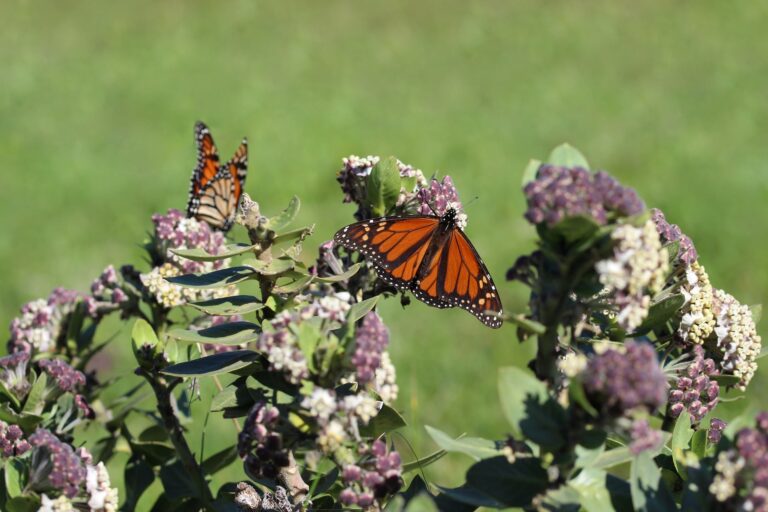Ferns are a type of plant that has been around since prehistoric times and make for an excellent addition to any garden. But are they perennials?

The answer is yes – ferns can be both annual and perennial, depending on the type.
In this article, we’ll discuss why ferns are perennials, how to best care for them, and some varieties of perennial ferns you should consider adding to your garden.
So if you’ve ever wondered if ferns are perennial or not, then read on – you’re in for a botanical surprise!
What is a Perennial Plant?
A perennial plant is a type of plant that lives for more than two years.
It can also be referred to as a “long-lived” or “evergreen” plant. Perennials are different from annuals, which die after just one growing season.
The root systems of perennials remain alive and intact during the winter months, allowing them to survive cold temperatures and come back stronger each spring.
This makes them an attractive choice for gardeners looking for low-maintenance plants that don’t need to be replaced each year.
Perennial plants can range from flowers to vegetables and even trees, but they all share one common trait: they live longer than two years!
Growing Ferns
Ferns are popular perennial plants that can be grown in a variety of settings and climates.
They come in a wide range of sizes and shapes, making them an attractive and versatile addition to any garden.
Ferns thrive in moist, shady environments and require minimal care once established.
With the right conditions, they will stay healthy for many years and provide your garden with lush foliage, bright colors, and an exotic look.
They also make great houseplants as they’re not too fussy about temperatures or humidity levels.
Growing ferns requires little effort but yields big results; all you need is good soil, regular watering, and plenty of shade for them to thrive!
Consider key points before planting ferns
Before planting ferns in your garden, there are a few things you should take into account.
First, choose a spot that is partially shaded and has well-draining soil. Ferns thrive in moist environments but prefer not to sit in soggy soil for too long.
Secondly, consider the type of fern you want to grow as some varieties require more care than others.
Lastly, make sure the area gets enough air circulation so the plants can stay healthy and avoid fungal infections that can affect their growth and health.
With these tips in mind, you’ll be able to find the perfect spot for your ferns and enjoy their graceful beauty for many years!
Fern Lifecycle
Ferns are a type of perennial plant that has a unique life cycle. Unlike other plants, they don’t produce seeds or flowers. Instead, they rely on spores to reproduce.

Ferns have an alternation of generations lifecycle which features two distinct stages: the sporophyte phase and the gametophyte phase.
During the sporophyte phase, ferns produce spore capsules containing thousands of tiny spores.
When these spores are released and land in a moist environment with adequate sunlight, they develop into small leafy plants known as gametophytes. The gametophytes create male and female reproductive organs that can produce sperm and eggs respectively when fertilized. Once fertilized, the eggs will develop into new fern plants!
This is how ferns reproduce and continue their life cycle over time.
Fern Anatomy
Ferns are ancient plant species that have evolved to survive in a wide range of environments.
They have an interesting anatomy that sets them apart from other plants.
Ferns have long, thin stems called rhizomes, which help the plant spread and grow.
They also have fronds, which are large leaves that provide photosynthesis for the plant.
The underside of the frond contains tiny dots known as sori, which contain spores.
These spores are used for reproduction and allow ferns to propagate across landscapes quickly!
Ferns also contain a specialized root system that allows them to absorb nutrients from their environment, such as water and minerals.
All of these features combine to make ferns a unique and hardy plant species that can thrive in many different areas.
Perennial Fern Varieties
Perennial ferns are a diverse group of plants that can be found in many different habitats around the world.

Many varieties are adapted to thrive in humid, shady locations, but some species can handle more sun and dry climates.
Some of the most popular perennial fern varieties include the Japanese Painted Fern, which produces bright silver fronds with purple highlights; the Christmas Fern, whose evergreen leaves remain green year-round; and the Lady Fern, whose delicate foliage is composed of bright green leaflets.
All of these ferns are low maintenance and will spread over time to create a lush carpet of greenery.
Perennial ferns also make excellent additions to garden beds or containers as they require little maintenance and can survive all year long with minimal care.
Conclusion
In conclusion, ferns are a diverse group of plants that can be found in many different habitats.
Many varieties are adapted to thrive in humid, shady locations and some species can handle more sun and dryer climates.
Perennial ferns make excellent additions to garden beds or containers as they require little maintenance and can survive all year long with minimal care.
With the wide range of colors, shapes, and sizes available, ferns are an easy way to add texture and beauty to any landscape.
Whether used for ground cover or as a focal point in the garden, these unique plants will bring life to your outdoor space for years to come.






